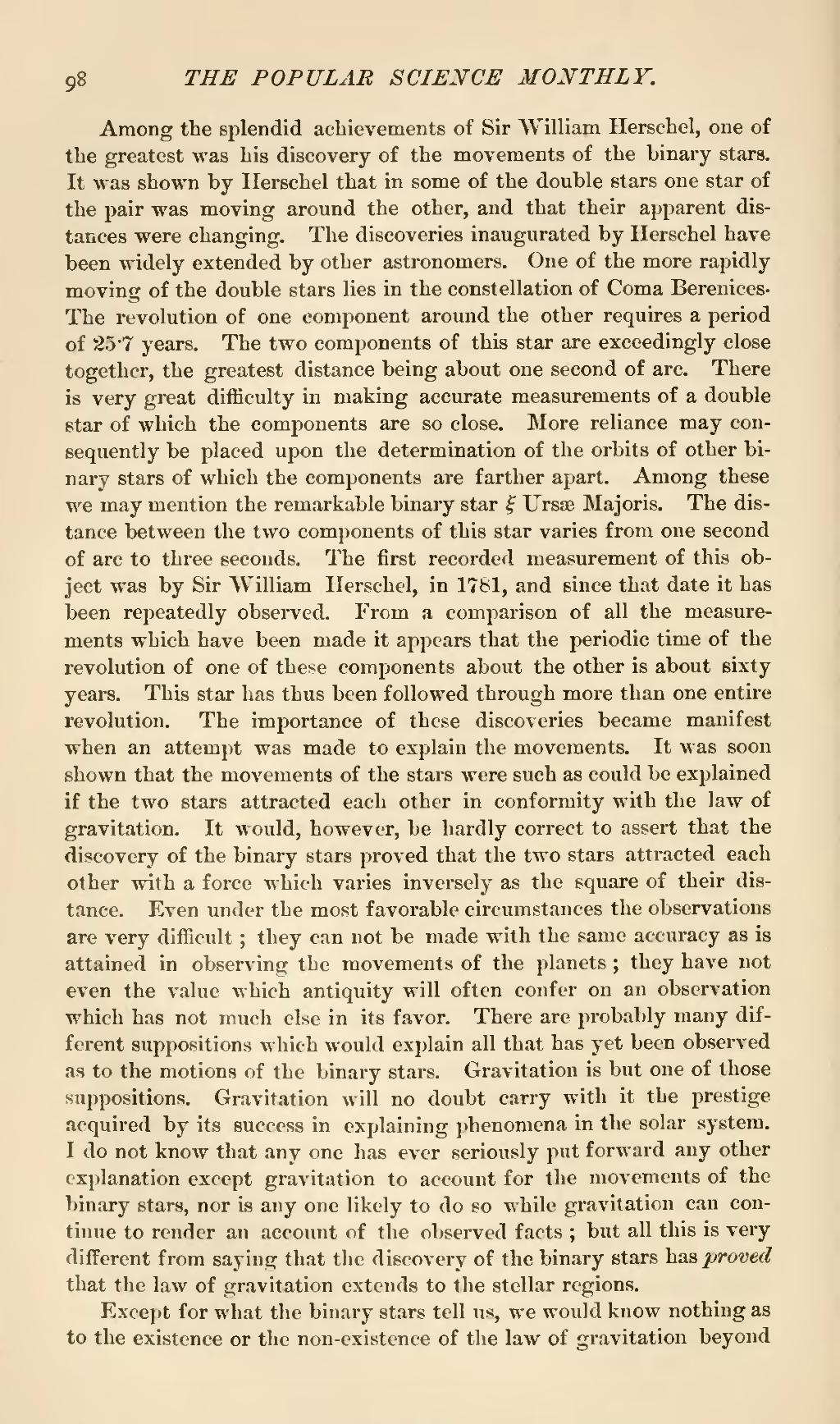Among the splendid achievements of Sir William Herschel, one of the greatest was his discovery of the movements of the binary stars. It was shown by Herschel that in some of the double stars one star of the pair was moving around the other, and that their apparent distances were changing. The discoveries inaugurated by Herschel have been widely extended by other astronomers. One of the more rapidly moving of the double stars lies in the constellation of Coma Berenices. The revolution of one component around the other requires a period of 25·7 years. The two components of this star are exceedingly close together, the greatest distance being about one second of arc. There is very great difficulty in making accurate measurements of a double star of which the components are so close. More reliance may consequently be placed upon the determination of the orbits of other binary stars of which the components are farther apart. Among these we may mention the remarkable binary star ξ Ursæ Majoris. The distance between the two components of this star varies from one second of arc to three seconds. The first recorded measurement of this object was by Sir William Herschel, in 1781, and since that date it has been repeatedly observed. From a comparison of all the measurements which have been made it appears that the periodic time of the revolution of one of these components about the other is about sixty years. This star has thus been followed through more than one entire revolution. The importance of these discoveries became manifest when an attempt was made to explain the movements. It was soon shown that the movements of the stars were such as could be explained if the two stars attracted each other in conformity with the law of gravitation. It would, however, be hardly correct to assert that the discovery of the binary stars proved that the two stars attracted each other with a force which varies inversely as the square of their distance. Even under the most favorable circumstances the observations are very difficult; they can not be made with the same accuracy as is attained in observing the movements of the planets; they have not even the value which antiquity will often confer on an observation which has not much else in its favor. There are probably many different suppositions which would explain all that has yet been observed as to the motions of the binary stars. Gravitation is but one of those suppositions. Gravitation will no doubt carry with it the prestige acquired by its success in explaining phenomena in the solar system. I do not know that any one has ever seriously put forward any other explanation except gravitation to account for the movements of the binary stars, nor is any one likely to do so while gravitation can continue to render an account of the observed facts; but all this is very different from saying that the discovery of the binary stars has proved that the law of gravitation extends to the stellar regions.
Except for what the binary stars tell us, we would know nothing as to the existence or the non-existence of the law of gravitation beyond
